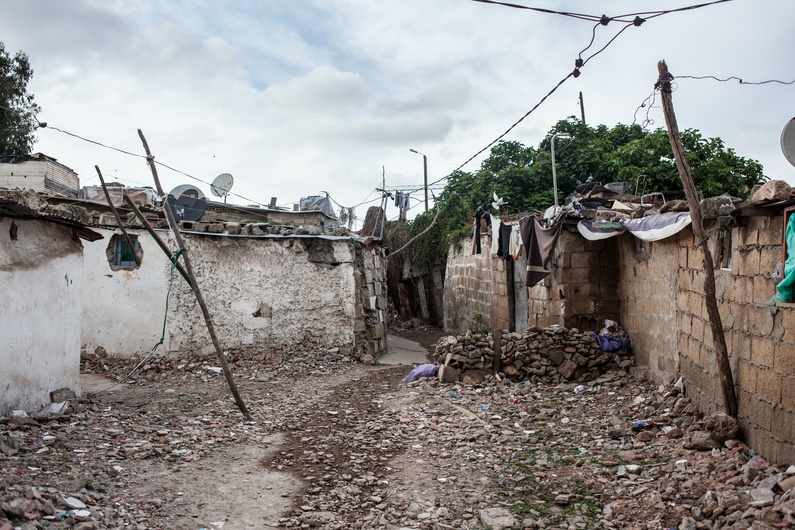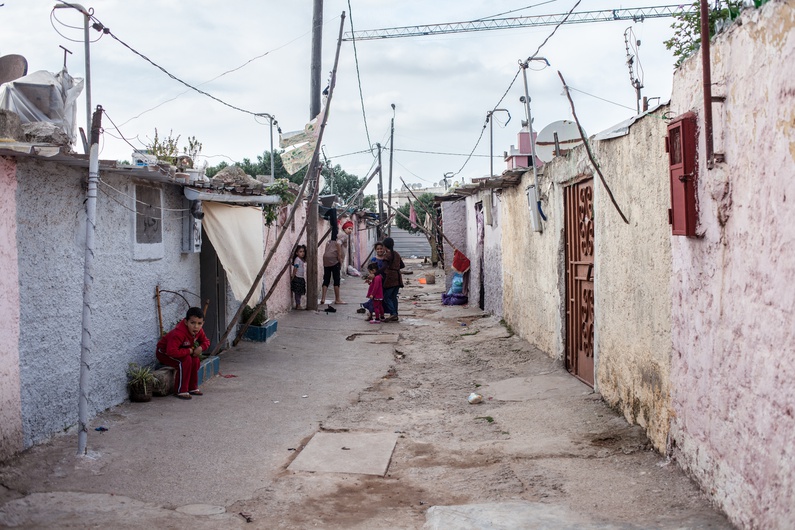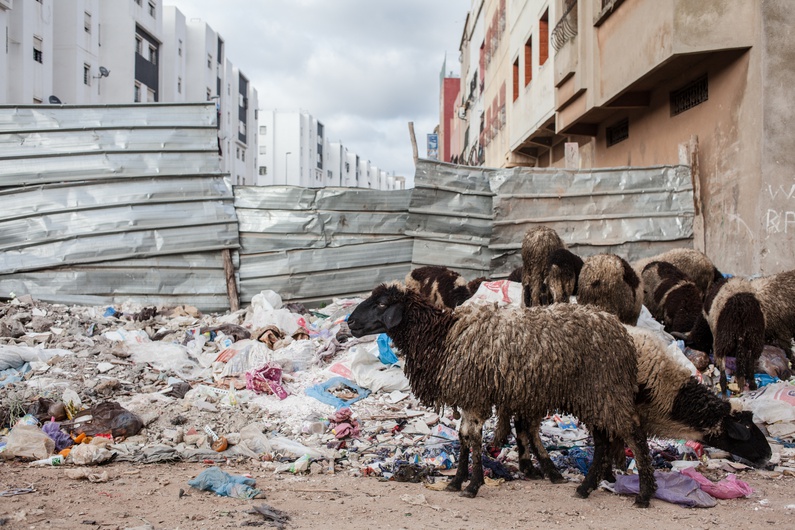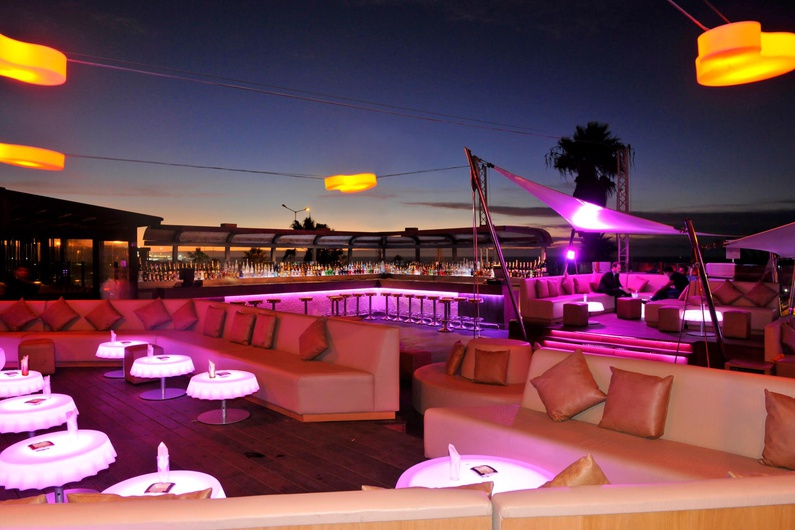
Casablanca: La Grande Illusion
Published on
Sidi Moumen is one of Casablanca's 500 shanty towns. The slum produced the five suicide bombers who launched the deadliest terrorist attacks in Morocco's history. Most Casablancans will never set foot there. But Cafébabel paid Sidi Moumen a visit to speak to the people, see how they're faring today, find out what the future holds and see Sidi Moumen in the context of Casablanca as a whole
'Sidi Moumen...c'est grave, Monsieur', the previously cheerful taxi driver gloomily intones above the noise of screeching tires, as if the pure mention of the infamous district was enough to burst our joyful bubble in the cramped Fiat Uno.
The place most Casablancans never go
Despite modern, shiny trams that glide in from the centre, many Casablancans never venture to the sprawling outer district and regard it little better than a leper colony. But things are changing: one of the Arab world's most ambitious plans of poverty reduction and slum clearance is taking place in Sidi Moumen. And why? Because, to use the local parlance, of 'what happened'.
 May 16, 2003. Diners feast on paella at the popular downtown 'Cafe de Espana' as a man runs in and detonates a bomb strapped to his chest. Four others were busy targeting other locations across the city in Morocco's deadliest terrorist attack in history, killing 45 and injuring over 100. Earlier that morning, all the young killers had left their homes in the slums of Sidi Moumen.
May 16, 2003. Diners feast on paella at the popular downtown 'Cafe de Espana' as a man runs in and detonates a bomb strapped to his chest. Four others were busy targeting other locations across the city in Morocco's deadliest terrorist attack in history, killing 45 and injuring over 100. Earlier that morning, all the young killers had left their homes in the slums of Sidi Moumen.
Turning things around
The poor neighbourhood became synonymous with extremism but also brought an influx of social projects to the area, with Sidi Moumen Cultural Centre standing out like a beacon. The giant incongruous yellow school bus outside 'from Harrisburg, Pennsylvania' is just the first hint of the importance of outside funding for the first social centre of its kind in all Morocco.
Catering for over 300 local youth from the slum areas, the facility provides language classes, a library with 5,000 books, musical instruments, computers, sports and a host of other other activities. When I arrive, a talent show is in progress, with children Djing, dancing and performing slam poetry. At the front row sits founder Boubker Mazoz, a lifelong community organiser and, with his silver hair and thin moustache, a replica of Omar Sharif in Dr. Zhivago.
 With seemingly endless contacts around the world, Boubker is in a perpetual state of fundraising, in lieu of any state support.
With seemingly endless contacts around the world, Boubker is in a perpetual state of fundraising, in lieu of any state support.
“Basically I became a professional beggar.” Boubker grins. Behind him a bookcase creaks under the weight of awards and honours bearing his name.
“NGOs came, donated things, left and nothing changed. Even I used to come here and deliver school satchels but they sold them all. So, I decided to stay.”
Many of the staff themselves grew up in the challenging area and understand only too well the value of remaining inside the community and leading by example. The centre's work has even inspired similar projects in Casablanca's sister city of Chicago.
 Despite government claims of 'significant progress' in slum clearance, there are still an estimated 111, 500 families crammed into over 500 hundred shanty towns in Casablanca alone, haunting the country particularly in the wake of the Arab Spring, which failed to take root in the kingdom. If such a revolution were to occur, places like Sidi Moumen would be the crucible, though much has changed since the bombings.
Despite government claims of 'significant progress' in slum clearance, there are still an estimated 111, 500 families crammed into over 500 hundred shanty towns in Casablanca alone, haunting the country particularly in the wake of the Arab Spring, which failed to take root in the kingdom. If such a revolution were to occur, places like Sidi Moumen would be the crucible, though much has changed since the bombings.
"An accumulation of frustration"
“There is no radical Islam here, there is injustice, poverty and marginalisation. A criminal is a radical isn't he?” Boubker says. “When you have someone that doesn't feel like a citizen, like nothing in their city is for them or their family, you have an accumulation of frustration. You don't break something that belongs to you.”
Accompanied by Mohammed Aaitouna from the centre, and Mokhtar and Abderahmane – two local security guards – we walk around the corner before being confronted with the Al Manzah slum. Overlooked by five-storey apartments, families here are squeezed into a head-height rabbit warren of wood and sheet metal. The path is at times so narrow we are forced to walk single file, brushing past the occasional vine overhead. An old man walks past with a donkey-pulled cart selling bread; a small economy operates here and some have menial jobs outside. Many are unemployed and illiterate. In Al Manzah, people's frailty is laid bare, and we weave through the camp briskly so as not to ruffle feathers. On the other side, finally out in the open, past a mountain of garbage that seems to vibrate with odour, kids pose for photos like rappers and yell out to us as we depart, 'bonne chance, mes amis!'
 In the Ainfa district, Casablanca's 'Beverley Hills', clean, palm tree-lined streets showcase sumptuous linen-white villas leading to the Corniche. Here, by the crashing waves, towers the Hassan II mosque, the second largest in the world after Mecca. Every Moroccan citizen was forced to contribute financially towards its construction, including the slum-dwellers displaced in the building process. A few hundred metres along the shore, the familiar mishmash of tin roofs poke above a two metre whitewashed wall that wraps around the 'bidonville' – a French colonial term for shanty town that supposedly originated in Casablanca. Such sights are common in the city, often referred to as 'walls of shame', and may serve as a metaphor for society's attitude towards the ballooning mass of the urban destitute. Out of sight, out of mind.
In the Ainfa district, Casablanca's 'Beverley Hills', clean, palm tree-lined streets showcase sumptuous linen-white villas leading to the Corniche. Here, by the crashing waves, towers the Hassan II mosque, the second largest in the world after Mecca. Every Moroccan citizen was forced to contribute financially towards its construction, including the slum-dwellers displaced in the building process. A few hundred metres along the shore, the familiar mishmash of tin roofs poke above a two metre whitewashed wall that wraps around the 'bidonville' – a French colonial term for shanty town that supposedly originated in Casablanca. Such sights are common in the city, often referred to as 'walls of shame', and may serve as a metaphor for society's attitude towards the ballooning mass of the urban destitute. Out of sight, out of mind.
But how about the hipsters?
Some of Morocco's wealthy night-owls, who writhe to deep house at chic seafront venues where bottles of Champagne sell for nearly €1000 (in a country with a GDP per capita of €2100, according to the World Bank), take a Darwinian approach. A young entrepreneur sniffs:
“You need poor people, you need rich people – that's the condition for the stability of the country. As long as the people don't die of starvation, Morocco is doing the right thing.”
 As well as the biggest mosque and the largest slums in Africa, Casablanca also hosts the biggest shopping centre in the continent, excitingly named 'Morocco Mall'. In here, dresses come with €900 price tags and visitors can scuba dive with tropical fish in the aquarium. From a balcony of one of the exorbitantly expensive restaurants, we spy a small island by the shore and approach it.
As well as the biggest mosque and the largest slums in Africa, Casablanca also hosts the biggest shopping centre in the continent, excitingly named 'Morocco Mall'. In here, dresses come with €900 price tags and visitors can scuba dive with tropical fish in the aquarium. From a balcony of one of the exorbitantly expensive restaurants, we spy a small island by the shore and approach it.
Toothless old ladies sit on the bridge of the island banging drums and playing Chaabi music, calling us 'voyeurs!' when we pass. After a small maze of alleys and gloomy box-like shacks, we reach a rocky outcrop and the great expanse of the Atlantic. Families and couples pose for photos whilst goats and chickens mooch around a small pen. I naively think that the animals are here for children to play with. I am later informed that their slashed throats and spilt blood are a necessary part of the sacrifice to Abdel Rahman, a revered saint whose final resting place is believed to be here.
“They used to mock the sick that came here to be healed,” our Moroccan journalist colleague remarks before gesturing to the Morocco Mall looming like an armadillo's shell in the distance, “but now they are the sick ones.”
This article is part of the Euromed Reporter project, conducted in partnership with I WATCH and Search For Commong Ground and supported by the Foundation Anna Lindh.




